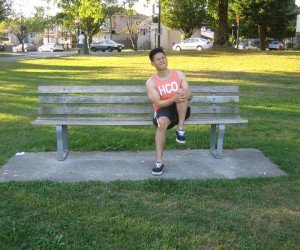Pes anserine bursitis involves inflammation of the bursa positioned in between the shinbone and 3 tendons of the hamstring muscles at the interior of the knee. This develops once the bursa is irritated and releases excess fluid which results to swelling that places pressure on the neighboring parts of the knee.
In most cases of pes anserine bursitis, there is tenderness and pain on the interior of the knee, around 2-3 inches beneath the joint.
What are the possible causes?
Bursitis typically develops due to overuse or continuous friction and stress on the bursa. When it comes to pes anserine bursitis, it is prevalent among athletes especially runners. Those who have osteoarthritis of the knee are also prone.

Various factors that can add up to its development include the following:
- Obesity
- Incorrect training techniques such as unable to stretch or sudden increase in intensity
- Tight hamstring muscles
- Medial meniscus tear
- Knee osteoarthritis
- Out-turning of the lower leg or knee
Indications
- Pain that slowly develops on the interior of the knee and/or in the middle of the shinbone about 2-3 inches beneath the joint.
- Intensifying pain during exercise or climbing stairs.
Management
Individuals who have pes anserine bursitis must take the necessary steps to modify the workout regimen so that the inflammation will not recur. Other treatment options include the following:
- Adequate rest – stop or limit activity or switch to a different one until the condition settles
- Application of ice – an ice pack can be used at 3-4 times throughout the day for 20 minutes at a time
- Anti-inflammatory medications – non-steroidal anti-inflammatory drugs (NSAIDs) and aspirin can reduce the pain and inflammation
- Physical therapy – this includes specific stretching exercises and ultrasound treatments.
- Injection – the doctor might inject a solution of anesthetic and steroid into the affected bursa for immediate relief.
In case the symptoms persist, the doctor might recommend the surgical removal of the bursa. This can be carried out as an outpatient procedure.
If placing weight on the leg triggers discomfort after the procedure, the doctor will recommend the use of crutches for a short span. Normal activities can be continued within 3 weeks after the procedure.
